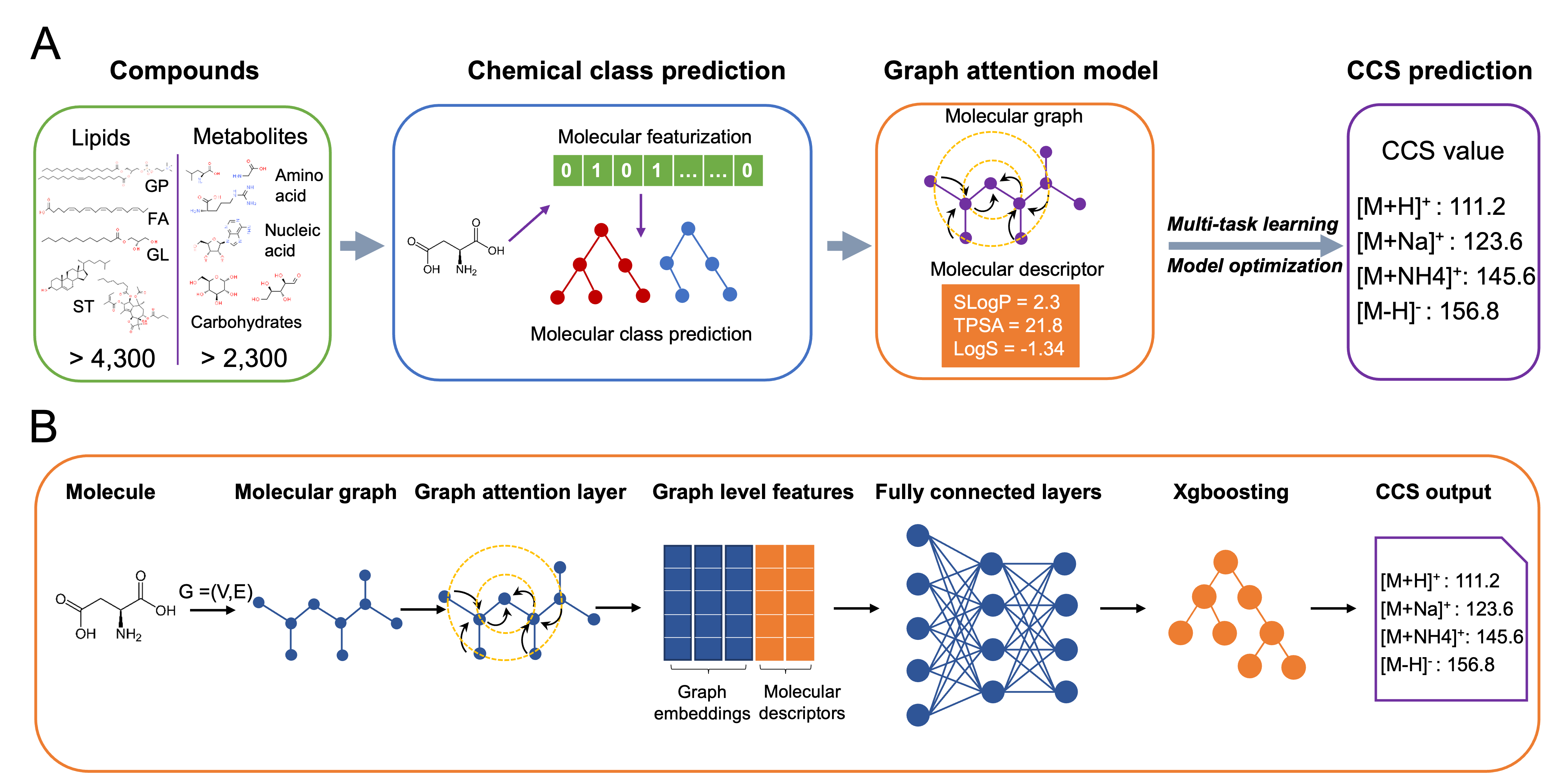Predicting Collision Cross-Section Values for Small Molecules through Chemical Class-Based Multimodal Graph Attention Network
Abstract

Libraries of collision-cross section (CCS) values have the potential to facilitate compound identification in metabolomics. Although computational methods provide an opportunity to increase library size rapidly, accurate precdictin of CCS values remains challenging due to the structural diversity of small molecules. Here, we developed a machine learning (ML) model that integrates graph attention networks and multimodal molecular representations to predict CCS values on the basis of chemical class. Our approach, referred to as MGAT-CCS, had superior performance in comparison to other ML models in CCS prediction. MGAT-CCS achived an median relative error of 0.47%/1.14% (positive/negative mode) and 1.40%/1.63% (positive /negative mode) for lipids and metabolites, respectively. When MGAT-CCS was applied to real-world metabolomics data, it reduced the number of false metabolite candidates by roughly 25% across multiple sample types ranging from plasma and urine to cells. To facilitate its application, we developed a user-friendly stand-alone web server for MGAT-CCS that is freely at https://mgat-ccs-web.onrender.com. This work represents a step forward in predicting CCS values and can potentially facilitate the identification of small molecules when using ion mobility spectrometry coupled to mass spectrometry.
